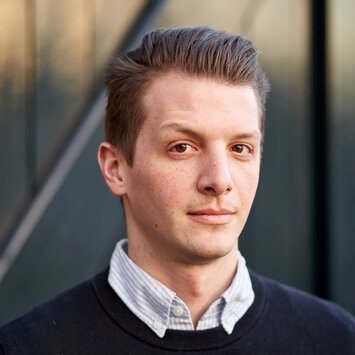Previous studies have shown that improvements result from teamwork assessments that make for stronger collaboration. But those evaluations are often inefficient. Manually analyzing videos, for example. Or conducting interviews. Can technology help us improve team collaboration? To answer this question, American-born cognitive scientist Wiltshire started the Coordination Dynamics project 2 years ago.
Effective teamwork is becoming increasingly crucial
Good cooperation; it is the basis of success. Especially with technological innovation gaining ground. "You see in many socio-technical fields such as business, aerospace, healthcare and science that those technological advances also require more focus on teamwork," Wiltshire explains. "Technology often equates to more complex work. And that complexity can be facilitated by better communication within teams." In his research, Wiltshire puts that information exchange under a magnifying glass. "To understand team processes, it is essential to examine their dynamics."
According to the study, a team consists of 2 or more people working toward a common goal. In Wiltshire's research, he assumes that a team is always made up of individual, interacting components. Through interaction among team members, a team can adapt to the complexities in their environment. In short, a team is a dynamic system. "By considering teams as complex dynamic systems, we can understand the changes in team processes that develop during a team task." This way of approaching a team is innovative. Says Wiltshire, "While research on teams spans several decades, only a small percentage of that work has focused on this theory."
The research itself
Dynamics among themselves are constantly changing during the performance of a task. When a previously silent team member brings in a new point, for example. Or when some sideways discussions arise when participants have completed their task. In his case study, Wiltshire asks participants to complete a joint task. The changes in terms of dynamics are measured by sociometric badges; special sensors. Wiltshire: "Wearable technology makes it possible to unobtrusively and reliably collect data from multiple individuals."
Wiltshire and his team of researchers then turn the obtained data into visualizations. "This is how we actually depict the important relationships between team coordination, functioning and performance, which provides possible new directions for future research. Those visualizations are a quick representation of the course of a collaboration. More efficient than the methods currently in use."
Package to facilitate process
"We think this method is promising," Wiltshire concludes his story. "It has potential for future scientific research aimed at improving team performance and well-being in many of today's complex sociotechnical work domains." But before that happens, more research needs to be done. Research ODYN is laying a foundation by developing valuable methods and visualizations that can be used in future research on team functioning.
To simplify these future investigations, Wiltshire's research group has developed a Python package called multiSyncPy. Python is an open source programming language: its use is free and the code is fully viewable by anyone.
Names of core project members: Travis J. Wiltshire, Dan Hudson, Martin Atzmueller, Stijn Wever, Philia Lijdsman.
Student Assistants on the project: Bo Ngoc Doan, Max Belitsky, Vivienne Kreaeter, Udesh Habaraduwa Kandambige, Andrei-Valentin Lixandru.
You can view "Wiltshire_ODYN_Workshop_2022.pptx" at: https://acrobat.adobe.com/link/track?uri=urn:aaid:scds:US:abd8453b-0419-459d-a379-0a66e90a33d2.
Would you like to know more about Wiltshire's work? You can read about it on his website.
This publication is part of the project NWO KIEM ICT ODYN (with project number ENPPS.KIEM.019.016), which is (partly) financed by the Dutch Research Council (NWO).

